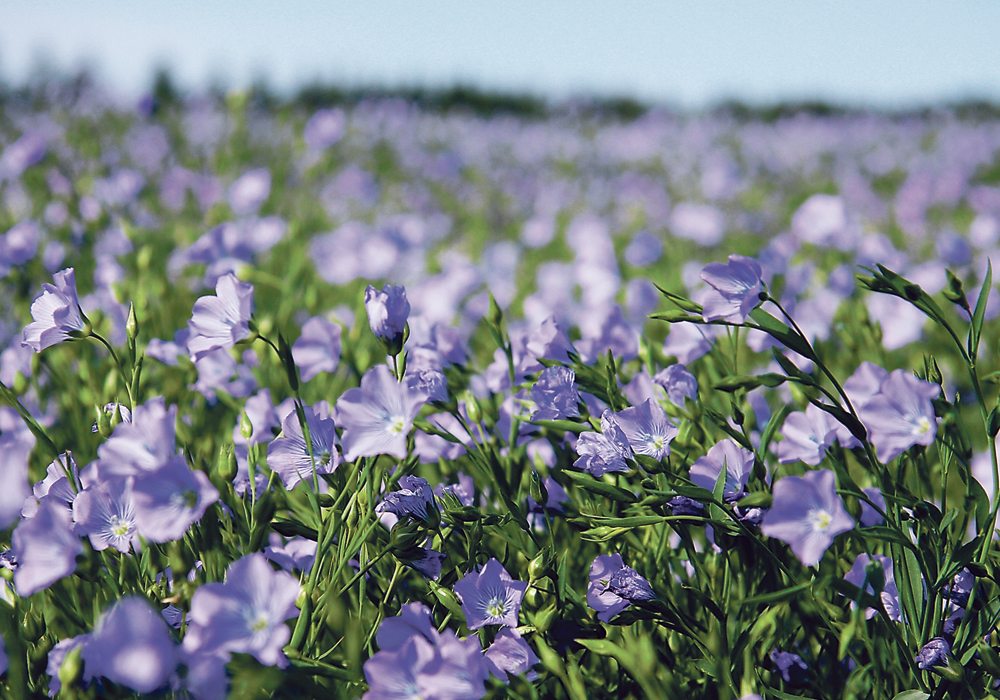Chuck Penner has been bullish flax for a long time, but the crop isn’t co-operating.
“It hasn’t listened to me. The flax prices have been just flat, maybe even softer a little bit the last few weeks,” said the analyst from LeftField Commodity Research.
However, he remains optimistic that prices are eventually going to get a lift from tightening supply fundamentals.
He is forecasting a 2017-18 carryout of less than 150,000 tonnes, which is well below Agriculture Canada’s estimate of 180,000 tonnes.
Read Also

Critical growing season is ahead for soybeans
What the weather turns out to be in the United States is going to have a significant impact on Canadian producers’ prices
Bulk flax exports were 195,000 tonnes through week 28 of the crop year, which is slightly ahead of last year’s pace of 189,100 tonnes. That is despite having lower total supplies this year.
Statistics Canada reported flax stocks of 522,000 tonnes as of Dec. 31, 2017, which is 66,000 tonnes smaller than the previous year.
Those are some of the reasons he remains bullish flax.
Marlene Boersch, managing partner of Mercantile Consulting Venture, was deeply concerned about the flax market outlook earlier in the 2017-18 crop year because of sluggish exports, but the situation has turned around nicely.
“We have been catching up over the winter months into China. That’s very, very good news,” she said during her January presentation at CropSphere in Saskatoon.
“I was very, very worried about that.”
Canada has lost market share in the European Union to big flax crops in Eastern Europe.
However, that has been offset by strong demand out of the United States, where growers produced 170,000 tonnes of the oilseed, down 23 percent from the previous year. That has created 50,000 tonnes of additional demand from that market.
She is forecasting total Canadian exports of 510,000 tonnes and 2017-18 carryout stocks of 153,000 tonnes, down from 209,000 tonnes the previous year.
“Prices should stay roughly flat,” said Boersch.
Penner said Russia has started making inroads in China despite harvesting a crop that is 24 percent smaller than the previous year.
“Just in the last few months they seem to be taking a bigger share of what China is importing,” he said.
Penner believes it might have something to do with a trade dispute between Russia and Turkey. Turkey used to buy Russian flax, process it and send the oil to China. Now Russia is bypassing the middleman.
Greg Kostal, an analyst with Kostal Ag Consulting, estimates 100,000 tonnes of Russian flax will move to China this year.
In an article he wrote for the FCC Express newsletter, Kostal said Russia and China signed a phytosanitary protocol in November 2017 that paved the way for greater and faster Russian flax entry to China.
Kostal said the cheaper Russian flax entering the Chinese marketplace could force Canadian flax prices lower.
Penner noted that Russia moving more flax into China means there is less going to Europe, which is reflected in rising European flax prices.
“It’s probably not quite enough to get Canadian flax moving there yet but it’s heading in the right direction anyway,” said Penner.
He disagrees with Boersch on the U.S. market. There is more Canadian flax heading south of the border than last year, but not nearly as much as he was anticipating.
Penner is forecasting an increase in Canadian flax acres in 2018 at the expense of lentils.
Boersch also believes flax acres will be up slightly in 2018 because it pencils in as the third best crop in her margins per acre calculation.


















